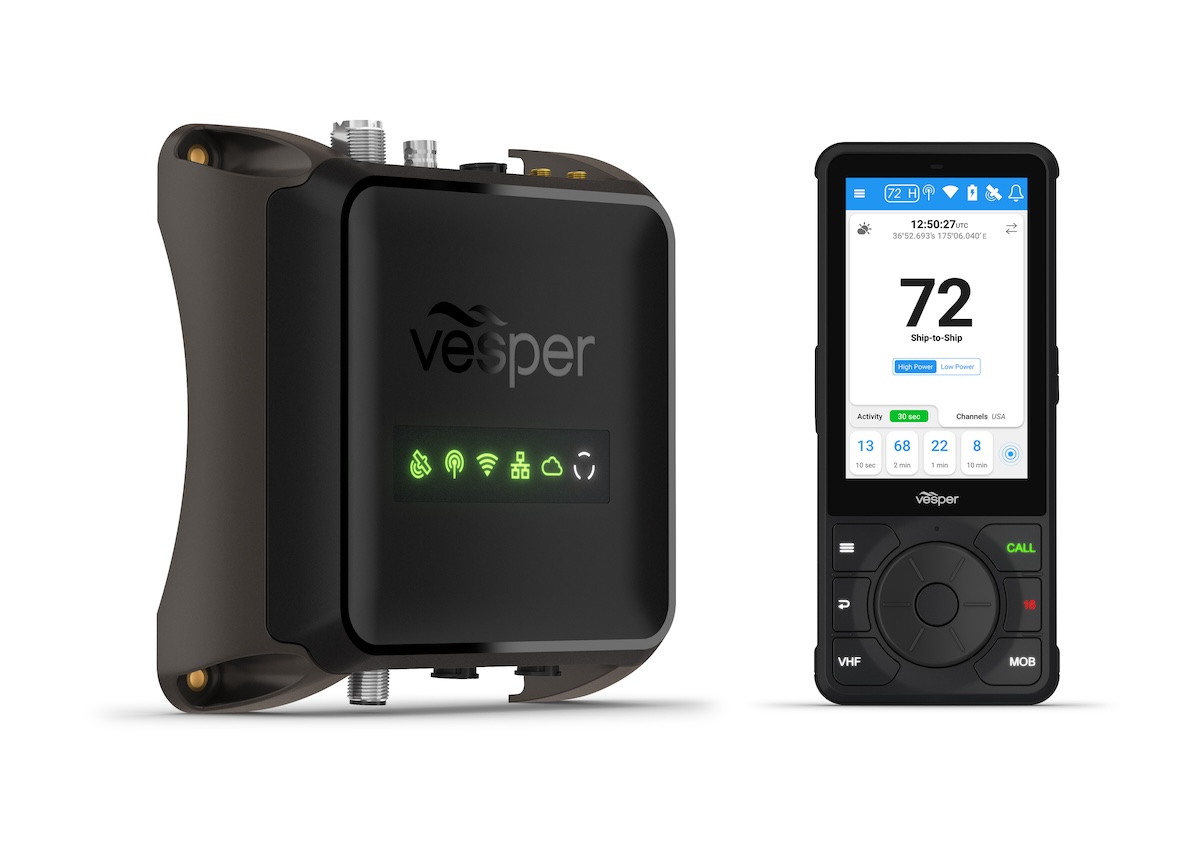
Vesper Marine’s Cortex V1 is advancing VHF technology.
Although not much has changed with VHF technology in the past few years, and the science behind VHF signals remains the same, manufacturers have been able to create innovative new radios loaded with features that were hard to imagine just a few years ago. Distress calling with GPS coordinates from handhelds, fixed-mount VHFs with expansive AIS capabilities and more are now becoming the norm. One of those innovative manufacturers is Vesper Marine.
The future of onboard VHFs
Vesper Marine — which hails from New Zealand and is now owned by marine electronics giant Garmin — has produced perhaps one of the most innovative radios on the market today: The Cortex V1. This radio and its related technology are rumored to be why Garmin decided to purchase Vesper; its features clearly show the future of onboard VHF radios.
The Cortex V1 radio comprises a hub unit and a tethered wireless handset with an intuitive, easy-to-use color touchscreen. Other tethered Wi-Fi-connected handsets (five directly and an additional five via a shipboard network) and a fully wireless handset can be added to the system, providing access from anywhere aboard.
The black box hub module can be mounted out of the way without needing a direct connection to the handsets. The included tethered handset is wired to 12V and connected to the main module via Wi-Fi. These handsets are designed for easy one-handed use, and the color touchscreens are easy to see even in the brightest sunlight.
The color touchscreen, a control dial and dedicated buttons on the tethered and wireless handsets give immediate access to all the features available in this advanced radio. These features include full VHF controls with clear and concise VHF channel information, as well as direct DSC calling on the handset. Just press on the vessel you wish to contact on the AIS display and have instant and direct DSC communications with that vessel.
Automatic Identification System
The radio includes a full-featured AIS (Automatic Identification System) transponder that displays AIS information on each handset and can also display the information on a connected multifunction display via an NMEA 2000 connection. While this can be done with other AIS-equipped VHFs, the Cortex can also alert you of collision possibilities. It does this by constantly monitoring the AIS information it receives and calculating all crossing and collision possibilities. When danger is predicted, the Cortex will notify the user with a collision alarm. As an AIS transceiver, it also transmits heading data generated by its onboard heading sensor to show other boaters the user’s direction of travel.
Because of its built-in electronics and smart AIS transponder, this VHF can even warn you of a dragging anchor by tracking boat movement, heading and bow position. A smartphone app works in conjunction with the Cortex, so even if you are ashore you can know if your anchor is starting to drag and you will receive all the same alerts as on each of the handsets.
Connected handsets
Another feature that makes this radio easy to operate and install are the wireless handsets. Available in completely wireless versions and tethered versions, these handsets can be placed in different locations aboard. The handsets allow you to deploy preset horn sounds and use loudspeakers if connected. The sound quality is excellent, with up to 85dBA, all controlled with an automatic squelch to keep reception clear and signals strong. While monitoring each channel simultaneously, this VHF also has the capability to record each channel for playback, so you won’t miss anything important.
Intuitive design
The operating system and controls on the Cortex V1 is so intuitive and easy to use that a novice should be able to learn quickly. The sunlight-readable color touchscreen has pinch-to-zoom and panning control and feels no different to use than the average smartphone. Just like higher-end MFDs, these handsets also have a manual “click wheel” and tactile buttons that can be used in place of the touchscreen.
This innovative product is becoming the benchmark for what a VHF is capable of. While some features can be found on other radios, it’s easy to see why Garmin wanted to acquire the technology, engineering and software proficiency of Vesper. Now combined with Garmin’s engineering team, it will be exciting to see what’s next in VHF and AIS onboard systems.




